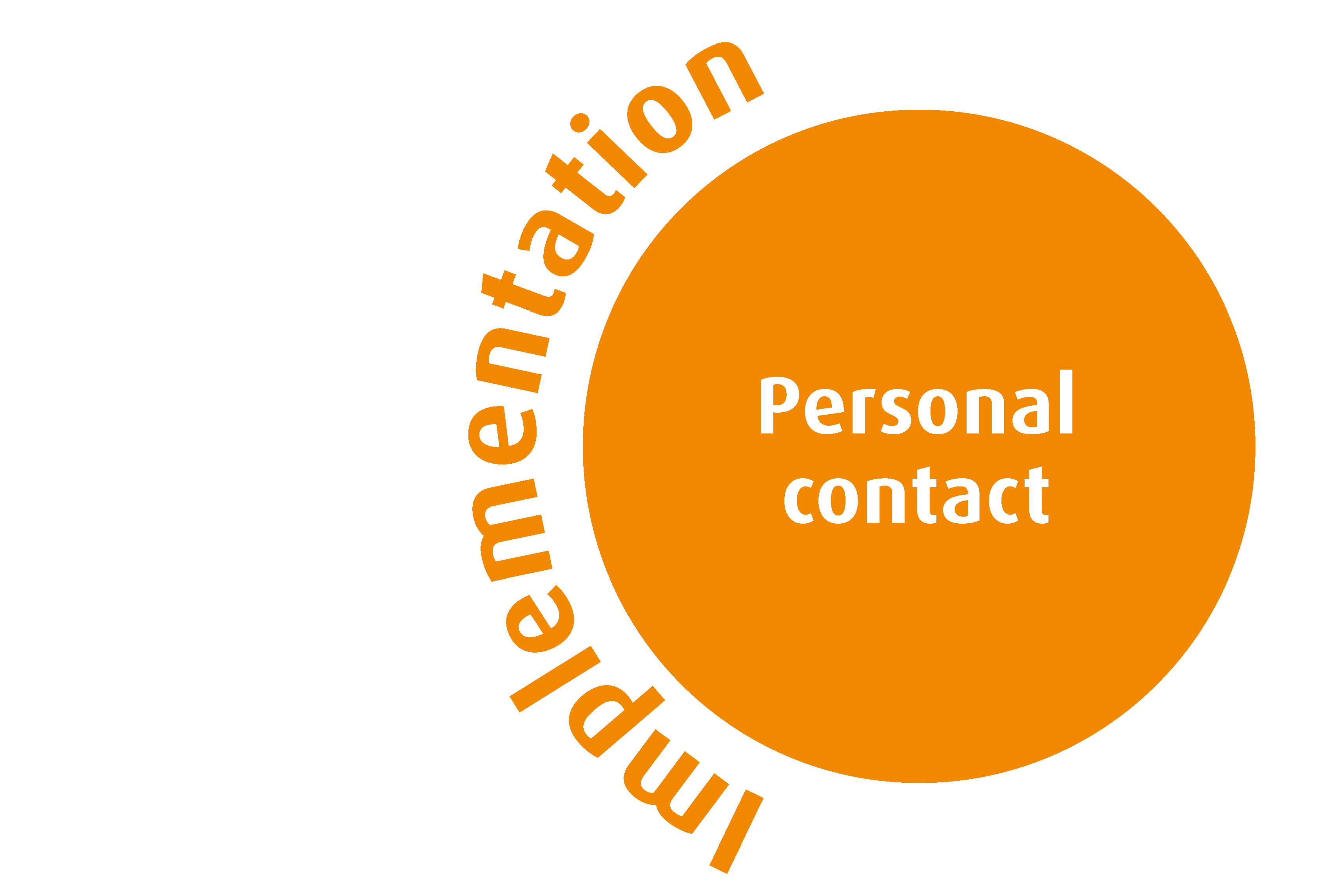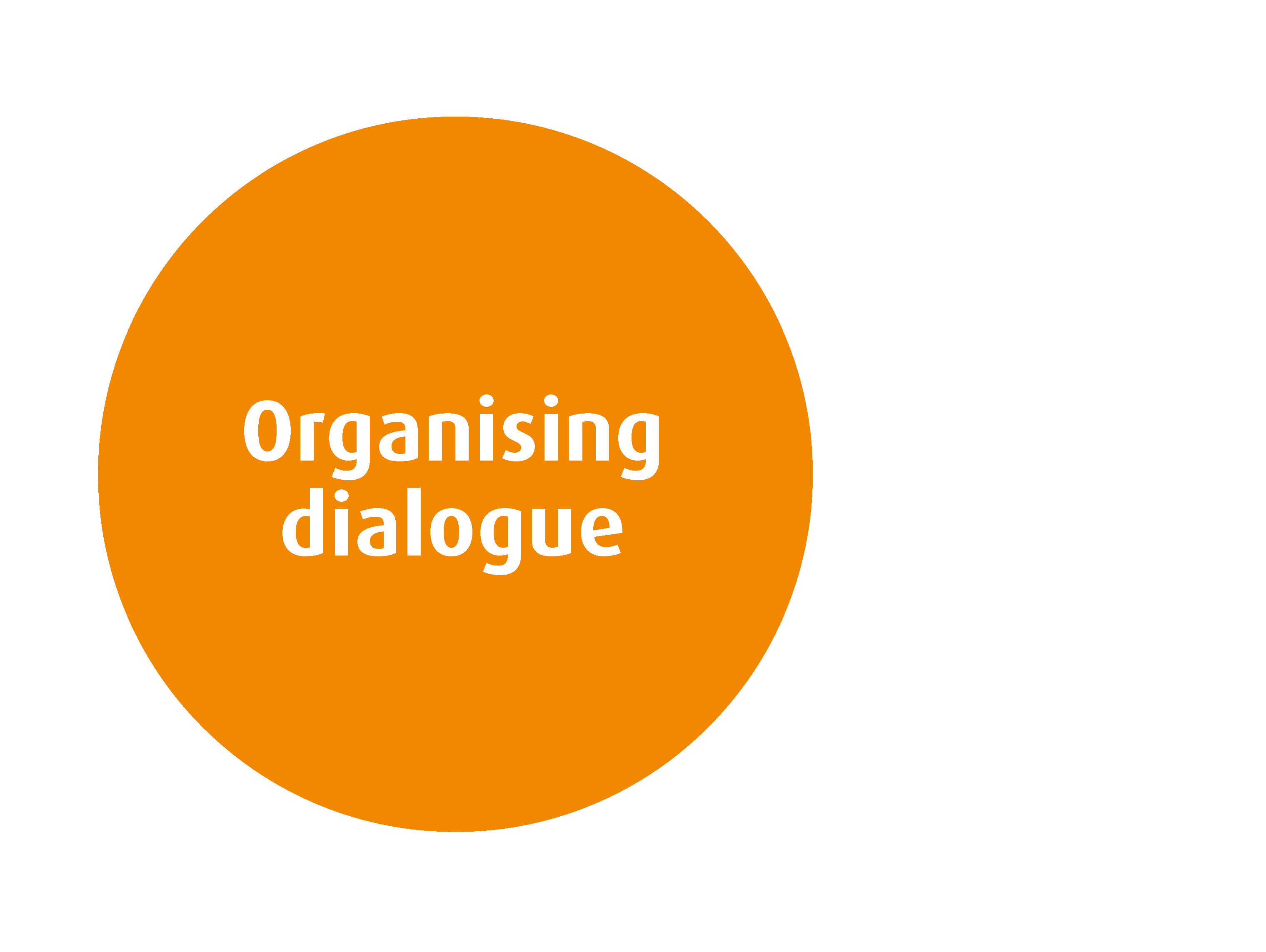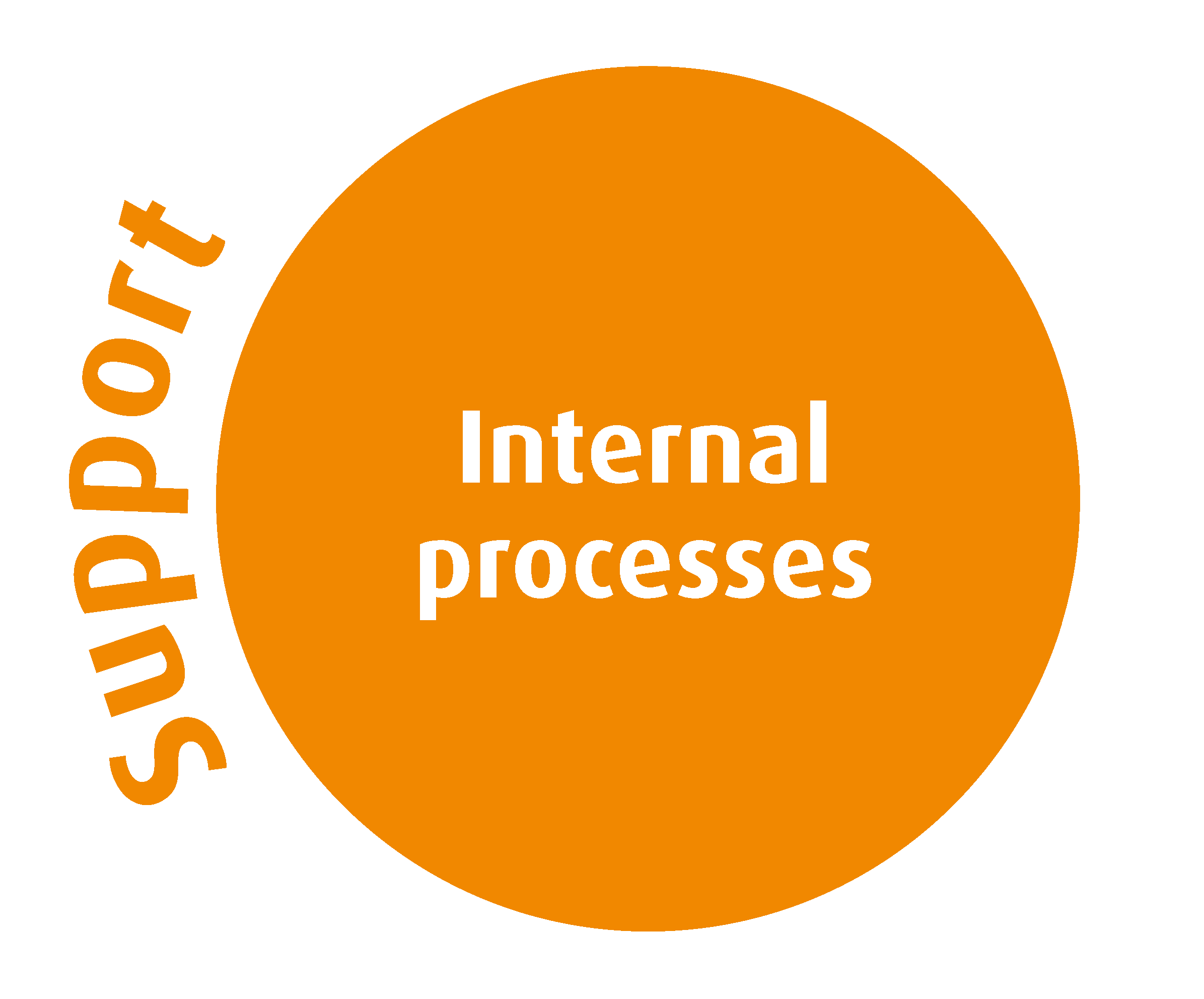Theory of meaningful stakeholder dialogue
The government expects companies to adhere to the OECD Guidelines and the United Nations' Guiding Principles on Business and Human Rights (UNGPs) to implement international responsible business conduct. To meet this responsibility, it is crucial for companies to actively listen to the needs of those affected by their operations.
By engaging in meaningful stakeholder dialogue, companies can gain valuable insights into the actions required to safeguard their stakeholders' wellbeing. After extensive consultations with businesses, trade unions, NGOs, and other experts - as well as through desk research, case studies, and four pilot projects - the SER developed a model for conducting meaningful stakeholder dialogue.
Humanising business
Engaging in meaningful dialogue throughout the international supply chain is one way to prioritise the interests of stakeholders. This approach is rooted in the concept of ‘human business’, which emphasises a commitment to the well-being and flourishing of others. Companies that practice human business not only focus on their own (financial) interests, but also ask how they can contribute positively to the well-being of stakeholders, both locally and globally. This is about creating value for stakeholders and embedding this commitment into business processes.
Dialogue with stakeholders is a key component of this ideology. By engaging in meaningful, ongoing conversations, companies can better understand the actions required to protect and enhance stakeholder well-being. Entering into dialogue means jointly exploring issues by actively listening, sharing experiences, and reflecting on needs and insights. The goal is to ensure that the outcomes of the dialogue are addressed collaboratively, maintaining continuous contact, rather than treating it as a one-off, tick-the-box activity.
Model
The SER has developed a model that provides the theoretical foundation for conducting meaningful stakeholder dialogue. This model is composed of nine key elements that should be considered when preparing, executing, and concluding a dialogue. These elements are organised into three categories: criteria, implementation, and support.
Click on one of the elements of the model to go directly to that element for more information
The tools and knowledge documents available on this website are based on these elements, offering practical guidance and examples to help companies engage in meaningful stakeholder dialogue. While the model serves as a comprehensive framework, companies are encouraged to incorporate all elements into their approach, deciding which aspects require more focus depending on the specific dialogue they plan to initiate.
The model is designed to inspire action without prescribing specific courses of action, allowing companies the flexibility to tailor their approach to their unique circumstances.
Motivation
Motivation refers to the reasons for engaging in dialogue with stakeholders, clarifying the company's intentions for initiating the conversation.
Consult these tools to understand how you can put the element of Motivation into practice:
- The added value of dialogue for my company
- Identifying your stakeholders (specifically step 6)
Commitment
Commitment means that your company is genuinely dedicated to engaging in dialogue with stakeholders and actively works to incorporate the results into its business operations.
A commitment to meaningful dialogue reflects a strong dedication from your company to involve stakeholders in your due diligence process. This commitment is crucial to demonstrate to stakeholders that you value their input and are prepared to take action based on their insights. Without genuine commitment, the dialogue risks becoming a mere tick-the-box exercise. Commitment can be shown by integrating meaningful dialogue into your IRBC policy, allocating the necessary time, capacity, and resources, and through the specific actions of your organisation. For instance, this could include actively promoting your stakeholder engagement policy or taking stakeholder feedback and signals seriously.
In addition to your company’s own commitment, it is important to consider the feasibility of dialogue and the level of commitment from other stakeholders. For more on this, see the element of ‘Inclusion’.
Consult this tool to understand how you can put the element of Commitment into practice:
- Preconditions for starting a dialogue
Inclusion
Inclusion means engaging with the right stakeholders. A dialogue is considered inclusive when stakeholders are identified appropriately and effectively, and when they are actively supported in their participation, whether directly or through credible representation.
By involving the right stakeholders, you ensure that their interests, needs, and first-hand knowledge are heard and considered. It is important to not only reach out to stakeholders you already know or have existing relationships with. Engaging directly with (or through representatives of) stakeholders, rather than relying solely on distant experts or familiar contacts, allows your company to gather reliable information from the source. This approach leads to more sustainable solutions and follow-up actions that are genuinely supported by those affected. An inclusive process also strengthens your company’s credibility, demonstrating a willingness to listen to all stakeholders—including those who may be critical of your operations.
To ensure an inclusive dialogue, it is essential to explore how stakeholders can participate and remove any barriers they may face. Consider factors such as potential negative consequences of their engagement, physical distance, language barriers, and their time constraints. Moreover, the dialogue must meet the needs of the stakeholder, as dialogue is a reciprocal process that cannot be imposed by your company. Understanding your stakeholder's motivations and interests helps foster commitment to the dialogue.
Consult these tools to understand how you can put the element of Inclusion into practice:
- Identifying your stakeholders
- Promoting stakeholder commitment
Transparency
Transparency refers to the openness and clarity of communication between a company and its stakeholders about decisions, actions, processes and results during the preparation, implementation and follow-up of a dialogue.
Transparent communication with stakeholders ensures that they enter into a dialogue with the right expectations. They know what can and cannot be achieved and whether their interests are sufficiently recognised and taken into account in the process. This generates trust and mutual understanding, provided you take confidentiality and sensitivity into account in the topics discussed. Clarity, timeliness, relevance and completeness are important when communicating information transparently. In addition, you must communicate in an accessible manner via a communication tool that matches the stakeholders’ preferences.
Consult these tools to understand how you can put the element of Transparency into practice:
- When and how to share information?
- Building trust
Personal contact
Personal contact refers to the (physical) interaction with stakeholders before, during, and after a dialogue, as well as the way in which you build and nurture the mutual relationship.
Personal contact forms the foundation of a successful dialogue. It helps foster mutual trust, openness, and a safe, equal environment for discussion. This connection plays a role before, during, and after the dialogue. During the dialogue, meaningful contact is established through an open, interested, and sincere approach to your stakeholders. Active listening is key, along with being mindful of power dynamics, cultural differences, varying experiences with dialogue, and knowledge of the subject matter. If your team lacks the skills needed, an external facilitator can assist in ensuring the process remains balanced and effective.
Before and after the dialogue, maintaining personal contact with stakeholders is essential to strengthen relationships and sustain the trust built during the engagement. The ultimate goal is to foster long-term relationships where both your company and stakeholders can easily communicate with one another. By staying connected with your stakeholders, you lower the barrier to addressing complex or sensitive issues, promoting more fruitful discussions and deepening the relationship.
Consult these tools and knowledge documents to understand how you can put the element of Personal contact into practice:
- Asking the right questions
- Good practices in conducting dialogue
- Building trust
- What makes a good facilitator?
Organising dialogue
Organising the dialogue involves thorough substantive and practical preparation to ensure that the dialogue's objectives are met and that stakeholders are meaningfully involved. This can range from one-on-one discussions to multi-stakeholder meetings.
Both before and during the dialogue, it is important to actively involve stakeholders in a meaningful way. Prior to the dialogue, you must agree on key topics, define the central question being explored, and clarify when and how the dialogue will be considered meaningful. During the dialogue, it is essential that stakeholders can contribute equally. Key factors to consider include the timing of the discussion (date, time, and its relation to other interactions), the format of the dialogue (online/ physical/hybrid, plenary/group/bilateral sessions), the language of communication, reporting methods, and how feedback will be handled. Additionally, assess whether your team can effectively lead the dialogue or if an external facilitator is needed to ensure a balanced and productive discussion.
Consult these tools and knowledge documents to understand how you can put the element of Organising dialogue into practice:
- Checklist multi-stakeholder dialogue meeting
- Checklist multi-stakeholder dialogue meeting abroad
- What makes a good facilitator?
Internal processes
Internal processes encompass all management, operational, and support activities that shape your business operations and are crucial to the success of stakeholder dialogue. This includes areas such as HR policies, work agreements, IT systems, and budgeting.
Your stakeholder dialogue approach is more likely to succeed when it is embedded within existing internal processes and supported by senior management. Effective internal processes begin with strong vocal support from senior management for meaningful stakeholder engagement. When leadership demonstrates commitment by integrating stakeholder dialogue into the company’s CSR policy, they are responsible for ensuring that its implementation is feasible. Your internal processes must then be sufficient to carry out this policy.
The following internal processes are essential for conducting meaningful dialogue:
- Coordination: Who within the company is responsible for stakeholder dialogue, and how much capacity needs to be allocated for this? Is additional training required? Who has the mandate to make decisions on matters raised during the dialogue?
- Internal communication: How is internal coordination regarding stakeholder dialogue managed? When, how, and with whom are outcomes and developments communicated within the company to ensure that external messages to stakeholders are clear and consistent?
- Budgeting: What financial resources are allocated for stakeholder dialogue, and how are these resources spent (or not spent)?
Consult these tools to understand how you can put the element of Internal processes into practice:
- Preconditions for starting a dialogue
- Checklist multi-stakeholder dialogue meeting
- Checklist multi-stakeholder dialogue meeting abroad
Collaboration
Collaboration refers to working with other parties - such as companies, trade unions, NGOs, knowledge networks, and governments - during the preparation, implementation, or follow-up stages of a dialogue.
Since most companies are not experts in stakeholder dialogue, seeking collaboration can be highly beneficial. Working with external partners offers many advantages, including access to valuable knowledge, the ability to verify information, connection to relevant networks, expert advice on structuring and following up on dialogues, increased influence, enhanced social acceptance, and logistical support for organising and coordinating efforts.
When entering into collaborations, it is important to build long-term relationships that respect the capacity and interests of the stakeholders you are working with. In the context of meaningful stakeholder dialogue, collaborating with experts and organisations in production countries is particularly beneficial. These partners have in-depth knowledge of local conditions, cultural nuances, and specific challenges. However, collaboration may be difficult in regions where civil society is under pressure and the space to advocate for human rights is shrinking. In such cases, civil society organisations may be reluctant to share information due to safety concerns or may lack the capacity to take effective action.
Consult these tools and knowledge documents to understand how you can put the element of Collaboration into practice:
- Who to partner up with?
- Building trust
- Listening to workers in the supply chain
- Promoting stakeholder commitment
Knowledge
Knowledge refers to the understanding of the legal, political, economic, cultural, and social contexts necessary for conducting a stakeholder dialogue.
The goal is to foster a meaningful dialogue grounded in facts and a shared understanding of the truth. Knowledge plays a crucial role in this process for several reasons. Firstly, it enables participants to engage in more in-depth discussions about complex topics. Conversations reach greater depth when all parties have a solid understanding of the issues at hand.
Secondly, knowledge enhances credibility and builds mutual trust when all participants are well-informed about the subject matter. However, while factual knowledge is important, there must also be space for emotion and differing perspectives. By paying attention to emotions and varied perspectives, participants can avoid getting stuck in debates over facts that may not address the core of the problem.
Consult these tools to understand how you can put the element of Knowledge into practice:
- Considering country-specific and cultural factors
- Identifying your stakeholders
Plan of action
A plan of action outlines the ongoing process of preparing, executing, concluding, and following up on a dialogue, including the necessary steps and considerations to ensure a meaningful stakeholder dialogue. A well-structured plan provides clarity, continuity, and predictability for stakeholders, fostering mutual trust and helps to prevent misunderstandings or disappointments regarding the process.
The scope of your plan of action will vary depending on the number of stakeholders involved, the complexity of the topic, and whether the dialogue is formal or informal. Your plan should incorporate all elements of meaningful dialogue to ensure a comprehensive approach.
Looking to develop your plan of action? Consult this tool:
- Towards a meaningful dialogue in 9 steps
Further reading
Do you want to read more about meaningful stakeholder dialogue in (international) value chains? Consult these sources.
- What “good” looks like: Meaningful stakeholder engagement (GBI, 2025)
- The Framework on Meaningful Stakeholder Engagement (STITCH, 2025)
- Boek: The Routledge Handbook on Meaningful Stakeholder Engagement (Karin Buhmann, Alberto Fonseca, Nathan Andrews, en Giuseppe Amatulli, 2024)
- Meaningful rights holder engagement: An introduction (Oxfam, 2023)
- The Protection and Promotion of Civic Space: Strengthening Alignment with International Standards and Guidance (OECD, 2022)
- Book (in Dutch): Anders groeien, Een medemenselijke aanpak van duurzaam en maatschappelijk ondernemen (Harry Hummels en Erik Hilgers, 2022)
- Book (in Dutch): Van winst naar waarde; Door stakeholderengagement naar langetermijnwaardecreatie (Frank Peters, 2022)
- What makes stakeholder engagement meaningful? 5 insights from practice (United Nations Global Compact Network Germany, 2022)
- Book (in Dutch): The Culture Map; Begrijp hoe mensen denken, leidinggeven en dingen bereiken binnen verschillende culturen (Erin Meyer, 2021)
- Cross-cutting: stakeholder engagement – Human rights impact assessment guidance and toolbox (The Danish Institute for Human Rights, 2020)
- Recommendations for stakeholder and civil society organisation engagement (Fair Labor Association & SER, 2019)
- OECD Due Diligence Guidance for Responsible Business Conduct (OECD, 2018)
- Meaningful Stakeholder Engagement (Multilateral Financial Institutions Group on Environmental and Social Standards, 2018)
- Due Diligence Guidance for Meaningful Stakeholder Engagement in the Extractive Sector (OECD, 2017)
- Book: The Culture Map; Decoding how people think, lead, and get things done across cultures (Erin Meyer, 2016)
- Doing business with respect for human rights, A guidance tool for companies – chapter 3.7 (United Nations Global Compact Network Netherlands, Oxfam Novib, Shift, 2016)
- Stakeholder Engagement in Human Rights Due Diligence (The Global Compact Network Germany, 2014)
- Bringing a Human Rights Lens to Stakeholder Engagement (Shift, 2013)
More information and project update
Do you have a question or suggestion? Please contact us at secretariaatimvo@ser.nl.
Want to receive the project update? Register here.
The SER project 'Meaningful stakeholder dialogue in (international) supply chains' is partner of Humanising business, supported by the Goldschmeding Foundation.












